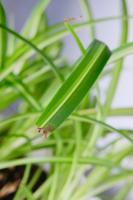Why Lower Tomato Plant Branches are Yellow
Tomato plants can be tricky to grow, and when they don’t look healthy, it can be difficult to determine the cause. One common issue that many tomato growers face is seeing lower branches turn yellow. This can be an alarming sight, as it may indicate a problem with the plant or soil. Here, we’ll explore the reasons why lower tomato plant branches turn yellow and what you can do to prevent it from happening.
Overwatering
Overwatering is one of the most common reasons why lower tomato plant branches turn yellow. When the roots of a tomato plant are waterlogged, they cannot effectively absorb nutrients from the soil. Over time, this lack of nutrients can cause the lower branches of the plant to become yellow and weak. To prevent overwatering, make sure to water tomato plants deeply but only when the top inch of soil is dry.
Nutrient Deficiencies
If your tomato plants are not getting the nutrients they need, they may be unable to grow properly. This can result in yellowing of the lower branches. Common nutrient deficiencies in tomato plants include nitrogen, phosphorus, and potassium. To prevent nutrient deficiencies, make sure to use a good quality tomato fertilizer and follow the instructions on the package. Additionally, adding organic matter to the soil can help improve soil fertility and nutrient availability.
Disease
Diseases such as verticillium wilt and fusarium wilt can cause yellowing of the lower branches of tomato plants. These diseases are caused by soil-borne fungi and can be difficult to treat once the plant is infected. It is best to prevent these diseases by planting disease-resistant tomato varieties and rotating crops each year. If you suspect your tomato plant may be infected with a disease, remove it from the garden and do not plant any tomatoes in the same spot for at least a year.
Pests
Some pests, such as aphids and spider mites, can also cause yellowing of the lower branches of tomato plants. These pests feed on the sap of the plant, which can cause damage to the leaves and stems. To prevent pest infestations, keep an eye out for signs of insects and use organic pest control methods such as companion planting and introducing beneficial insects like ladybugs.
Conclusion
In summary, yellowing of the lower branches of tomato plants can be caused by a variety of factors, including overwatering, nutrient deficiencies, disease, and pests. By taking steps to prevent these issues, you can help your tomato plants stay healthy and produce a bountiful harvest.

 how many times do yo...
how many times do yo... how many planted tre...
how many planted tre... how many pine trees ...
how many pine trees ... how many pecan trees...
how many pecan trees... how many plants comp...
how many plants comp... how many plants can ...
how many plants can ... how many plants and ...
how many plants and ... how many pepper plan...
how many pepper plan...































